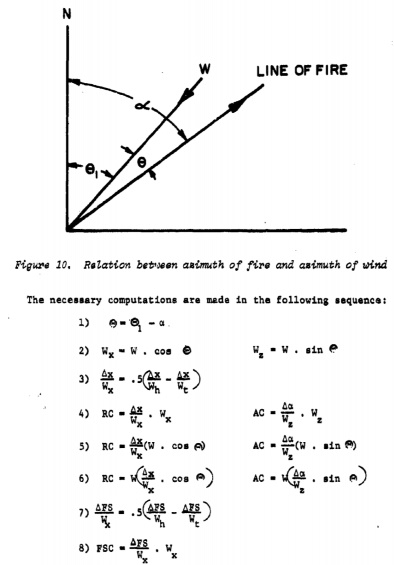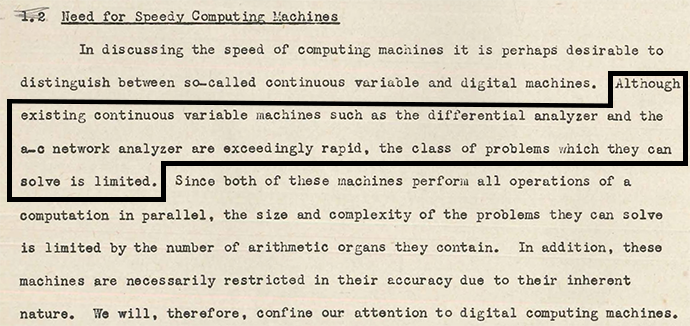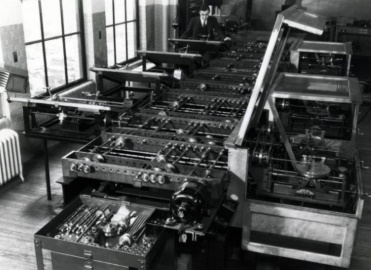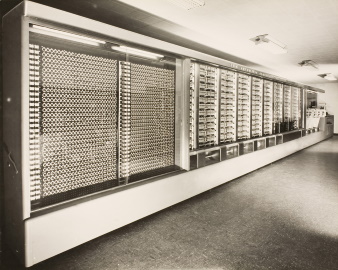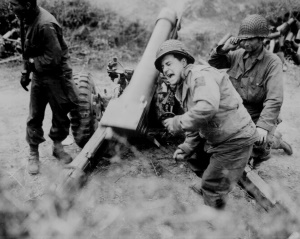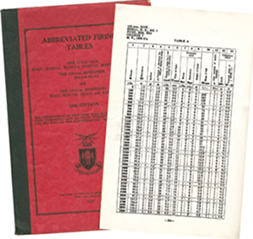World War II
After the United States entered World War II in 1941, the Ballistics Research Laboratory of the U.S. Army (BRL) faced a growing demand for artillery firing tables that provided trajectory information to hit intended targets. Previously, these tables were prepared by “human computers” who performed complex mathematical computations using a simple desk calculator.
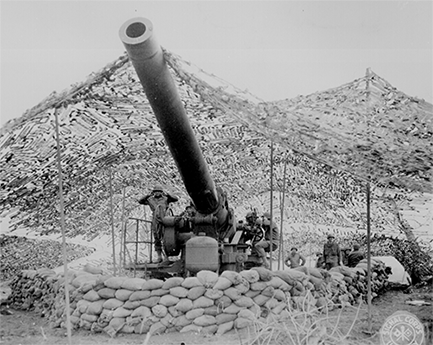
Front view of 240mm howitzer just before firing into German-held territory, 1944, National Archives.


